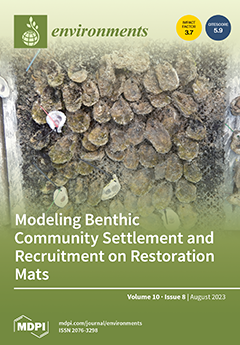The effect of bad air quality on human health is a well-known risk. Annual health costs have significantly been increased in many countries due to adverse air quality. Therefore, forecasting air quality-measuring parameters in highly impacted areas is essential to enhance the quality of life. Though this forecasting is usual in many countries, Sri Lanka is far behind the state-of-the-art. The country has increasingly reported adverse air quality levels with ongoing industrialization in urban areas. Therefore, this research study, for the first time, mainly focuses on forecasting the PM
10 values of the air quality for the two urbanized areas of Sri Lanka, Battaramulla (an urban area in Colombo), and Kandy. Twelve air quality parameters were used with five models, including extreme gradient boosting (XGBoost), CatBoost, light gradient-boosting machine (LightBGM), long short-term memory (LSTM), and gated recurrent unit (GRU) to forecast the PM
10 levels. Several performance indices, including the coefficient of determination (R
2), root mean squared error (RMSE), mean absolute error (MAE), mean squared error (MSE), mean absolute relative error (MARE), and the Nash–Sutcliffe efficiency (NSE), were used to test the forecasting models. It was identified that the LightBGM algorithm performed better in forecasting PM
10 in Kandy (
. In contrast, the LightBGM achieved a higher performance (
for the forecasting PM
10 for the Battaramulla region. As per the results, it can be concluded that there is a necessity to develop forecasting models for different land areas. Moreover, it was concluded that the PM
10 in Kandy and Battaramulla increased slightly with existing seasonal changes.
Full article





